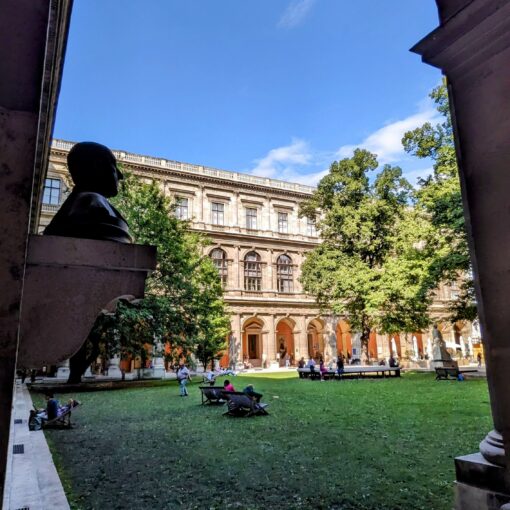One of the deep truths of nature is that the universe, as it exists to our senses at human scales, does not behave the same at all other scales. For instance, when you and I describe the motion of a baseball through the air, we only have to enumerate the energy of the ball as stored in its mass (its weight, or its gravitational potential energy) and its motion (kinetic energy). Specifying those two reservoirs of its total energy turns out to be quite complete. Similarly, we can understand the mechanics of a wave by measuring its frequency and its period.
But if we humans try to scale these arguments to the microscopic world of the atom (or smaller), we find our understanding of nature appears incomplete. In particular, when we compute the properties of the atom (such as its light emission properties) using classical pictures of the atom (electron “balls” orbiting in the electric field of proton “balls”), we start to get results that are off by factors of two. It’s really more complicated than this, but mathematically you start to find computations that often differ by this simple factor from the experiment.
The reason is spin. The name is a bad one, as it implies a classical analogy. Spin is a unit of internal angular momentum, an inherent property of a subatomic particle that has absolutely no analogy at the human scale. It’s frustrating, actually.
Spin is a lot like a hidden quantity of momentum that’s particular to an atom, or a subatomic particle. Looking at our baseball, its closest analogy (but still completely inaccurate conceptually and computationally) is that of a curve ball. Energy is stored not just in the mass and linear motion of the ball, but also its rotation. If we neglect the rotation, the curving motion of the ball seems to be something “outside” of normal gravity. We might ascribe supernatural reasons for this, if not for careful observation of all the motions of the baseball.
But a spinning baseball, and electron spin, are just not the same thing. Spin is an inherent property of the electron – the electron is NOT spinning. In fact, if you try to force that interpretation on the electron you get all kinds of problems and paradoxes (how can the electron have enough physical size to even have a classical spin?). You really find you are forced to accept that this quantity exists, because the experimental evidence for it is blazingly overwhelming. At the same time, you find no comforting example from everyday life that helps you to make sense of it.
Frustrated with spin since I first learned about it, in my college quantum mechanics class, I embarked on a literary journey recently to try to make sense of this stuff. In particular, my interest in completely re-discovering spin was sparked by my discovery of an English translation of Sin-Itaro Tomonaga’s “The Story of Spin”. With utter lust I purchased the book at City Lights in San Francisco, and I have been reading this text with great gusto.
I have always been tempted by spin, most deliciously when I was told (I don’t really remember learning it, or when learning it, understanding it) that Paul Dirac’s relativistic formulation of quantum mechanics naturally contains spin with no ad hoc assumptions. Tomonaga’s book promised to lead the reader along the journey of discovery of spin.
I’ve gotten several chapters past Dirac’s work, and at this moment I still feel COMPLETELY BLANK on the idea of spin. Grrr. It seems that no amount of study will ever illuminate this property for me. Will I be forced merely to accept its experimental reality?



